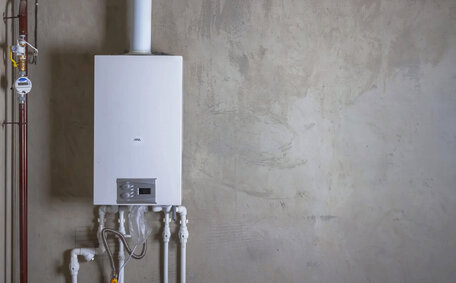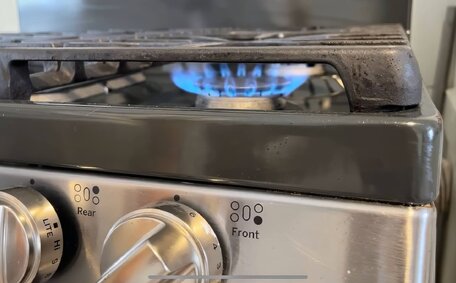Identifying When Fixtures Are Nearing the End of Their Lifespan
Common household fixtures such as faucets and water heaters typically have a lifespan of 10 to 20 years, after which they may show signs of wear and tear signalling the need for replacement. The following indicators suggest it may be time for fixture replacements:
- Decreased water flow from taps usually warrants an inspection or replacement.
- Leaking pipes or taps
- Loud banging noises in supply pipes
- Brown rust stains on bathroom surfaces suggest it’s time for fixture replacement.
- Increasing energy bills for your water supply
- Frequent repairs needed
- Visible corrosion and mineral deposits on pipes are reliable indicators that your plumbing fixtures may be deteriorating.
Replacing ageing plumbing fixtures before they can fail completely can prevent further damage to your property down the line. Plumbing professionals can assess your fixtures’ lifespan and advise on the right time for repairs or replacement. Investing in new, more water-efficient models can reduce maintenance needs, cut costs, and prolong the fixtures’ life, all while lessening environmental impact.
Visible Signs Your Fixtures Need Replacing
Some apparent visual signs indicating the need for replacement of fixtures such as faucets, showerheads, and toilets include:
- Rust & Corrosion: Rust, corrosion, or mineral accumulation on fixtures suggest advanced wear that could lead to leaks or blockages.
- Stains & Discolouration: Yellowish stains or discolouration around drains and tiles can signify underlying plumbing issues needing immediate attention.
- Dripping & Leaking: Persistent dripping or leaking from taps, despite basic repairs, signals the need for replacement.
- Wobbly or Shifting: Loose, wobbly, or shifting fixtures like toilets may indicate eroding seals or pipe damage.
- Cracks & Chips: Even minute fissures in porcelain, enamel, or chrome can worsen, eventually replacing faucet sooner than expected.
Attention to these signs and considering whether to repair or replace can avert significant plumbing issues. If you spot multiple issues, enlist a licenced plumber to inspect and advise on whether to repair replace elements for the optimal health of your home.
Leakage Issues
One of the clearest signs your plumbing fixtures need replacing is leakage. Minor but persistent leaks are a sign that seals and pipes are wearing out. It’s crucial to address promptly any plumbing issues, like leaks in the kitchen or bathroom, to prevent water damage and increased water bills.
Identifying the most critical leaks is key to deciding whether to replace parts or take other actions:
- Dripping Faucets: Rubber washers and -rings wear out over time. Worn parts in your faucet typically mean it’s time for a replacement.
- Pipes & Connectors: Corroded, cracked or shifted water supply pipes in your home’s plumbing should be replaced. Pipe relining is another repair option.
- Toilets: Flapper valves and fill valves wear out, causing leaks that often indicate they need replaced with newer components. Replacing internal toilet parts may suffice.
- Water heater leaks: can be dangerous. Have a professional inspect and confirm whether replacing your appliance is needed.
Ignoring persistent small leaks in your water system is risky business and can damage your home, but a timely intervention from a plumber can mitigate further damage your property. Have your local licenced plumber inspect your fixtures and advise on the best repair or replacement solutions.
Corrosion and Mineral Buildup
Plumbers confirm that over time, hard water can cause corrosion and mineral buildup that may irreparably harm plumbing fixtures. Rust, heavy limescale deposits, and discoloured surfaces can wreak havoc on the pipes your home relies upon, flagging clear signs of wear and distress. If ignored, your home it’s time to notice how corrosion eats through pipes, connectors and tanks - shortening lifespan and causing leaks or blockages.
Protecting the pipes your home relies on from corrosion and mineral buildup is essential for their longevity. Some useful tips include:
- Installing water softening systems to reduce mineral buildup
- Regularly cleaning fixtures and washing machine supply hoses to eliminate mineral and sediment buildup
- Employing pipe relining to reinforce corroding sink pipes
- Choosing corrosion-resistant materials such as cast iron, galvanized steel, or plastic for water pipes
- Proactively engaging in efforts to replace plumbing before significant leaks occur in old pipes could also minimise water exposure and prevent mold growth
For extensive corrosion or mineral deposits, seek a professional inspection. Fixtures might require replacement to mitigate leakage or other risks from severe wear.
Cracks and Structural Damage
Cracks and structural damage in plumbing fixtures or plumbing pipes can occur due to natural wear and tear, exposure to elements, and other factors. Even hairline cracks can cause water to leak out and air to leak in, reducing water pressure and quality over time.
Notable signs of wear, like cracks and structural damage, cover:
- Visible cracks in porcelain, enamel or chrome surfaces that have become worn out
- Pitting, holes or cracks in pipes and connectors
- Slow drips or damp areas around fixtures
- Reduced water flow and pressure
- Strange noises from pipes like hissing or whistling
Quickly addressing persistent cracks and damage is vital to avoiding further impairment of your plumbing system. A licenced plumber should examine any cracks or damage, and they might suggest pipe relining, component replacements, or complete fixture replacement based on the severity.
Noisy Pipes and Fixtures
Unusual sounds from your pipes and fixtures may signal issues needing repair or replacement. Experiencing common noises? It may be best replace to investigate their potential causes:
- Hissing: This high-pitched noise usually means you have a small leak allowing steam or water to escape.
- Banging or hammering: Known as water hammer, this happens when valves or faucets are closed too quickly allowing Pressure buildups to vibrate your old pipes.
- Screeching: Metal-on-metal squealing noises point to fittings or mounts that may have come loose over time.
- Knocking: Rhythmic knocking is commonly caused by debris or mineral deposits within pipes.
While noisy pipes can seem harmless, Ongoing problems can exacerbate pipe damage and lead to leaks over time. Consult a professional plumbing company to inspect unusual noises immediately for diagnosis and timely repairs or replacements to restore optimal function.
Evaluating the Costs and Benefits of Repair vs Replacement
When faced with ageing or damaged plumbing fixtures, homeowners often debate whether to repair or fully replace them. It is prudent to consider the arguments for both repair and replacement.
Basic repairs can like replacing washers, valves, pipes or connectors can preserve the function of your fixtures, but sometimes home it’s best to replace them to ease the strain on your water bills. Yet, repairs might not resolve underlying problems like corrosion, leaks, and efficiency decrease.
While fixture replacement incurs a higher initial cost, the long-term benefits include a longer lifespan and improved efficiency. New, efficiency-centric models made from durable materials typically prevent problems such as leaks. Modern fixtures, especially hot water systems, are engineered for water efficiency, which can significantly can save money on long-term usage and bills.
Deciding whether you should repair or replace fixtures in your bathroom kitchen areas ensures one navigates towards optimal performance.
Important considerations when deciding between kitchen and bathroom replacement vs repair include:
- How old are my current fixtures? Perhaps it’s time to replace your those fixtures that have given you service for a decade or two.
- How often should components needed to be repaired or might time replace lately?
- Am I noticing a spike in my water bill due to leaks or waste?
- Are my fixtures causing water flow or pressure issues?
- Is visible corrosion or damage present?
Ideally, replacement should happen before catastrophic system failures occur. This prevents secondary water damage or even flooding. Replacement, though more expensive, also improves functionality.
Discuss your specific situation with a licenced plumber to determine when need replacement or repair for an ideal resolution. They can inspect your existing fixtures and quote repair costs versus new installations.
Implementing Preventative Maintenance
Implementing regular preventative maintenance can significantly extend the lifespan of plumbing fixtures and pipes. Simple maintenance tips that can easily be incorporated include:
- Inspecting fixtures and joints annually for leaks, cracks or corrosion
- Cleaning faucet aerators and showerheads to prevent clogs
- Flushing water heaters to remove sediment buildup
- Utilising drain cleaners monthly not only clears out grease but also can preempt a leaking tap situation
- Sealing any small leaks promptly to limit water exposure
- Proactively upgrading old supply hoses and other plumbing valves
Undertaking minor maintenance lets you catch issues early before they worsen or fail unexpectedly. Investing a little time upfront can avoid costly emergency repairs down the line. It also optimises efficiency and water pressure.
For the biggest impact, have your plumbing system inspected yearly by a licenced professional. They can assess all fixtures and pipes, advising you on any potential replacements or repairs needed to keep everything functioning smoothly.
Knowing When Upgrades Are Necessary
It’s important to distinguish necessary system upgrades from desirable upgrades for extra features or aesthetic appeal. Necessary upgrades ensure your plumbing continues functioning properly by replacing outdated or failing components. Desirable upgrades provide conveniences like touch-faucets or luxury finishes to suit personal tastes.
Signs that necessary upgrades are needed include:
- Components in your system that last between 10 to 15 years indicate it’s time replace your parts due to a reduced life span
- Frequent repairs required
- Visible corrosion and mineral deposits
- Leaking pipes or taps
- Low water flow or pressure
- Noisy pipes
- High heating cooling and hot water bills
Replacing outdated fixtures with water efficient models can improve functionality while saving money long-term. Investing in newer toilets, faucets, and shower heads can be worthwhile, saving you money in the long run due to advances like precision valves, aerators and high-pressure ratings for optimal flow control.
Upgrade decisions also depend on your household needs. Growing families or accessibility requirements may necessitate remodels. Discuss your situation with a licenced plumber to determine required upgrades versus optional home improvements.
Installation and Compatibility
Proper installation is crucial for ensuring functionality, water efficiency, and longevity, regardless of whether your plumbing fixtures are new or old.
Key installation steps include:
- Selecting replacement fixtures suited to your existing plumbing setup
- Accurately measuring the space to custom fit new fixtures
- Thoroughly cleaning pipes and connections prior to installation
- Carefully removing old fixtures without damaging surrounding pipes or walls
- Correctly placing and securing new fixtures based on specifications
- Testing water flow and drainage for leaks after installation
For guaranteed compatibility and seamless integration, our Glenhaven Plumbing experts handle the installation’s complex details. With extensive product knowledge and proper techniques, we get the job done right the first time.
Our licenced, professional plumbers also offer:
- Onsite consultations to assess your needs
- Precision measurements for perfect fixture fittings
- Seamless connections to existing pipes and outlets
- Expert wiring of taps and temperature controls
- Advice on latest water-saving fixtures
Avoid the pitfalls of DIY installations and potential incompatibilities. Allow our seasoned plumbing professionals to install your upgraded fixtures for optimal performance.





